Anatomical
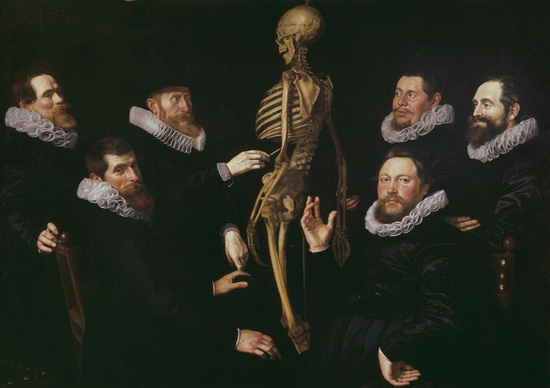
—mine of misinformation—
– The Anatomy Lesson of Dr. Sebastiaen Egbertsz., Aert Pietersz
Cutting open a cadaver, you might think, and portioning out its parts would lay bare to the enquiring eye its interrelations and functions—a simple enough matter of reverse engineering the body. But, as Civ Clarke sagely informs me, the body on its inside is all smoky mirrors, a mine of misinformation.
So with norbiton: ideal city. To slice through the clutter of the actual place and lay bare the sinews, nerves and vessels of the Ideal City is, as we have observed elsewhere, more a process of dereliction than it is of construction. We must shove much aside, slice through intricate arrangements of pulsing matter, push through curtains of soft tissue, jelly out whole organs quivering on to the theatre floor if need be. And in so doing we will make room, so that not only our embrued forearms and elbows, but also our blunt and awkward imaginations, might work.

—awkward imaginations—
– Comparative anatomy of man and bird, Pierre Belon
![]()
Clarke claims some authority in the matter of anatomy, having spent a little time as a medical student at a London teaching hospital.
He didn’t like it. They throw you straight in, he says, to dissecting corpses. At school you dissect cows’ eyes and pigs’ hearts, which is an existential cakewalk. This was the real stuff, straight away, a human cadaver. You dissect in pairs or in teams, you are set certain tasks. You cover your hesitation, your disgust by arsing around. Clarke says that the first time they put a scalpel in his clutsy fist he inadvertently punctured some sack of bile or other and got squitted in the eye. On it went.
A theatre is a seeing place, etymologically, and in the Renaissance learned and curious men would gather in the theatres of the universities in Bologna and Padua, Paris and Leuven and elsewhere, to watch the dissection of corpses. Vesalius and his peers would talk, no doubt, as they worked, indicate this and that; but the point was to show. They would peel back layers and discard the irrelevant. Anatomy, to repeat, is about dereliction, not construction. And so, little by little, structures and forms and wonders would emerge.
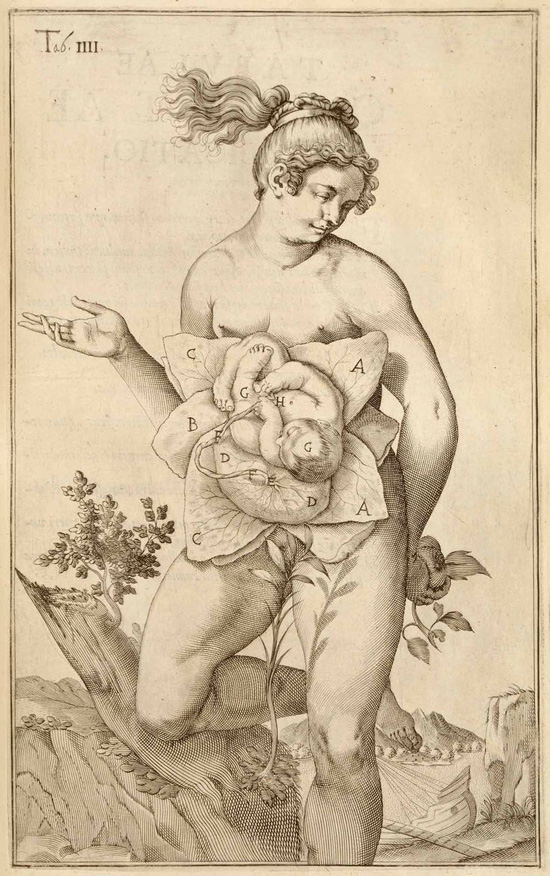
—wonders would emerge—
– de formato foetu, Girolamo Fabrici
The curious seek out wonders, whatever horrifies. They climb up to high places. Hemingway relates that he attended bull fights, in the first instance, so that he could watch things—bulls, matadors; bulls mostly—die. Dürer died of a cold caught while visiting the Dutch coast to see a dead whale which had decomposed, been washed away, before he got there. Dickens nearly killed himself climbing Vesuvius during an eruption.
And Clarke, peering into those bodies pinned on the marble slab, saw, not the answers to his examiners' questions, nor the forensic truth of an autopsy, but a labyrinth of coloured wires and ducts and pipes, hidden compartments and sinks and miniscule escapements and all the baroque trickery of volutes and corbels and supports; and on his eye went, deeper still into damp and dripping grottoes and pungent cavities and flushed coverts: there it lay, the body in parts. And drawing it, he discovered, was the best way to see it.
He says that he left medical school after three terms and some failed exams, with a sheaf of inaccurate anatomical sketches and the intention of making his way as an artist.
![]()
He works now at Kingston hospital as a cleaner.
The hospital stands just over the horizon of Norbiton like a planetary mass. I can see bits of it from my living room window: brick chimneys, metal ducts, slate roof; and to the left, concrete, glass and aerials.
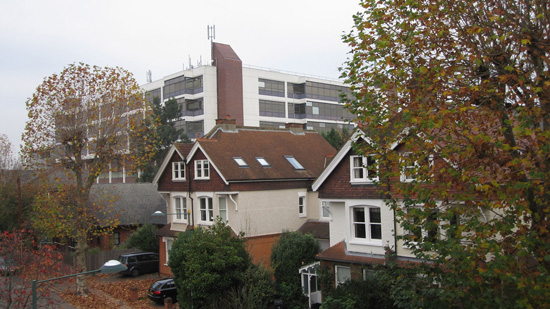
—planetary mass—
– Kingston Hospital from Wolverton Avenue
One of its back exits escapes on to Wolverton Avenue, and Clarke pops out here once or twice on a shift to smoke a cigarette.
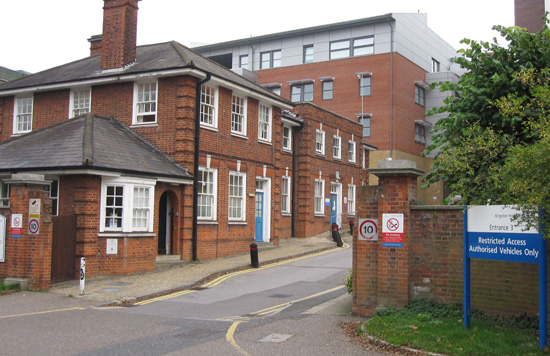
—escapes—
– Kingston Hospital exit on Wolverton Avenue
You can imagine the stories the nurses and auxiliaries tell each other there, smoking. We all know the genre—body parts in bins, babies born with two heads, that sort of thing. Clarke has gathered these stories around a theme he likes to play on: hospitals as the workshop of chaos, bits and pieces of creation cut up and sawn off and sewn back on wrong.
Michel Foucault liked to talk of hospitals in the same long-since-extinguished breath as prisons, schools and factories. Individual bodies parcelled up, portioned out, watched constantly, rendered docile. National service, comprehensive education and the NHS. According to this logic, hospitals are part of a network of power, a power that has no centre but operates everywhere.
I prefer Clarke’s controlling image of hospitals as chaotic spaces on the margins of civilisation. This fits, also architecturally. Hospitals have no centre, they are jumbles of elements: little clinics, Victorian brick gargoyled with extension and annex and awning, Portakabins, assimilated streets of ivied houses, stacks of signs pointing to departments named for benefactors and wards named for flowers and various other alphabetised and acronymed facilities. For a hospital administrator, looking at the ground plan of his hospital must be like scientists at CERN looking at scattergram sub-atomic particles—the memory of a location, a best guess, a most recent intelligence.
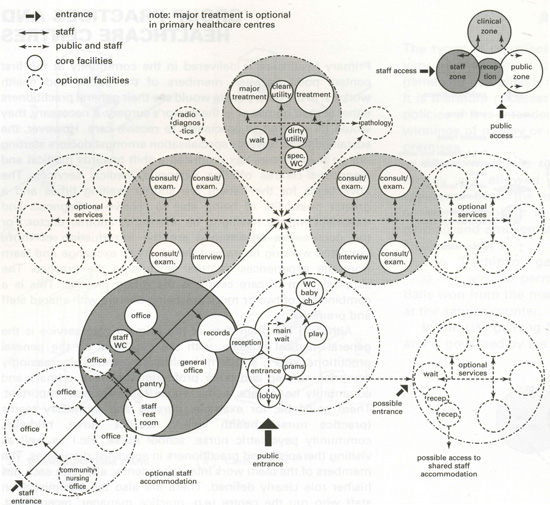
—most recent intelligence—
![]()
Clarke says that on the face of it the irony of his originating impulse to be an artist was that he could not in fact draw very well. He was and remains a poor draughtsman.
He maintains, however, that the irony is only apparent, because drawing is about more than pleasing line. That his lines were not pleasing was due to mechanical ineptitude, a clumsy hand; but his lines were well chosen. He saw well.
I only have his word for that, but his theoretical position is sound. Disegno—drawing, or design—was the founding virtue of Renaissance art, as described at any rate by Vasari, who notes with approval the comment of Michelangelo upon visiting the workshop of the Venetian Titian—he paints well; a pity he never learnt to draw.
Disegno is not about producing pretty sketches; it is about understanding with the pen. It is an intellectual activity. Painting, casting, sculpting, these are crafts; a painter or sculptor is a craftsman who belongs to a guild like other craftsmen—weavers and goldsmiths and masons; but drawing raises him to the status of humanist scholar, man of the new learning, aristocrat of the mind. The glory of Florence was its masters of disegno.
Good disegno also entailed drawing out viable new forms. Just as in the evolution of species not all conceivable forms are in fact physically viable, so that actual and potential species dot total-creature-space in the way that rational numbers dot total-number-space; so in disegno-space not all dispositions of models or arrangements of limbs are viable; figures will overbalance, appear graceless, deformed. Disegno, like all art, has a traceable lineage.
The new solutions were drawn sometimes from life, sometimes from Classical models, and sometimes from small mannequin models manipulated and turned around an axis.

—manipulated and turned—
– The Flagellation of Christ, Bacchiacca
But in each case, artists of the new style made their three-dimensional modelling conform to their understanding of correct anatomy, establishing calf and thigh as contraposto lines of force, the muscles of the chest and stomach as sectional lines modelling the massy three-dimensional solidity of the figures.
And in the process of producing drawings, anatomical studies, compositional sketches, artists started to spend more and more time in this preparatory world, a world of half-finished forms, asymmetrical detail; a world where different techniques—silverpoint, leadpoint, red and black chalks, variety of washes, and so on—would burgeon, overlay one another. In time finished drawings would be exchanged or provided for patrons or lovers, a form of intimate intellectual meditation. Drawing-space—disegno-space—would become distinct from, if always contiguous to, painting-space or sculpture-space.
![]()
To draw properly, for the artists of the quattrocento, was to see properly; so to draw the anatomical structures of the body was to see the anatomical structures of the body with great clarity. A case could be made that the artist’s need to understand human anatomy precedes and underlies the medical establishment’s need to understand human anatomy. Not a very good case, perhaps, but the flow is not all one way.
Vesalius’s illustrator, for instance—by repute a student of Titian—sets his specimens in allegorical poses, in possible landscapes, and does so in single-point perspective; he establishes them not only in space, but by some association of mind, in place—on a hill overlooking a little village, against an old wall; as though anatomy and topography were related and mutually informing disciplines.
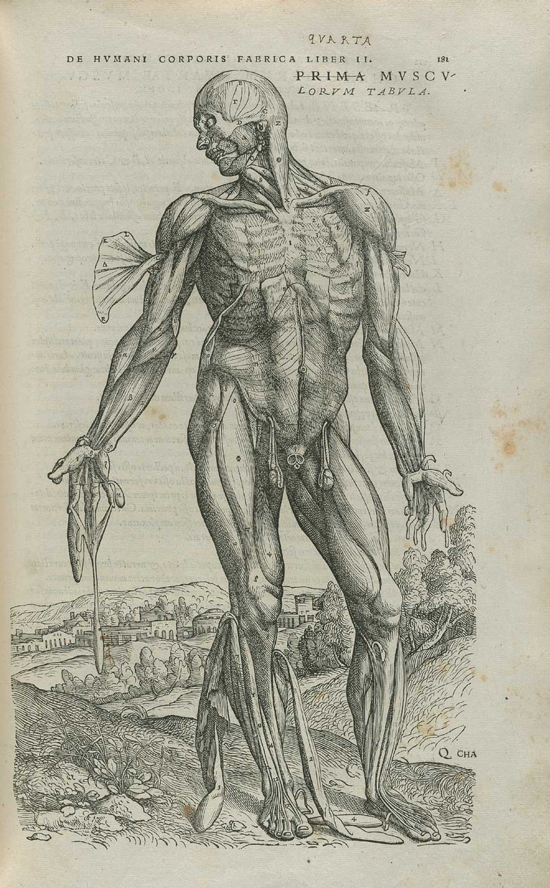
—mutually informing—
– de humani corporis fabrica, Andreas Vesalius
It would take time for such studies to break free of their artistic hinterland, to become the orthogonal projections we associate with machine parts.
You would almost think he had been looking at Michelangelo. Could early-modern anatomy have looked like this if it had been emerging in a (gothic) tradition of light modelling, sinuous curve?
![]()
Clarke argues, correctly, that the nature of intellectual engagement in artistic practice has changed since the quattrocento; he therefore dropped drawing from his portfolio of artistic ambition within months of leaving medical school. It was not, he says, drawing that persisted in his own artistic consciousness, oddly, but anatomy.
Anatomy is emblematic of a form of thought which understands by breaking down. The whole structure of the universe can be split into manageable parcels, the parcels can be laid out, their interrelations traced. And you can do all this with only the most rudimentary, or erroneous understanding, of the nature and function of the whole. As Clarke says, it’s all smoky mirrors.
Renaissance understanding of the body was trying to disentangle itself from centuries of error.
But the greatest errors—that the body was a hydraulic system, for instance, sluicing black and yellow bile, phlegm and blood and semen around—persisted. Thinkers squirmed for insights, having little room for manoeuvre alongside the invisible elephantine errors to which they were heir. You can look at the structures as hard as you like, but you still will not read the body accurately.
![]()
From around the time (1504) that he was preparing the sketch for the Battle of Anghieri to roughly 1510, Leonardo da Vinci was, he later claimed, present at the dissection of ten human bodies. Shortly before his death he was boasting thirty.
Many of his anatomical sketches are of a pioneering accuracy; some are not. For instance, in his drawing of a head in vertical and horizontal section (including quiffs of hair, in wave-like and fluid motion) he attaches the eye by the optic nerve to three cavities labelled O, M, and N.
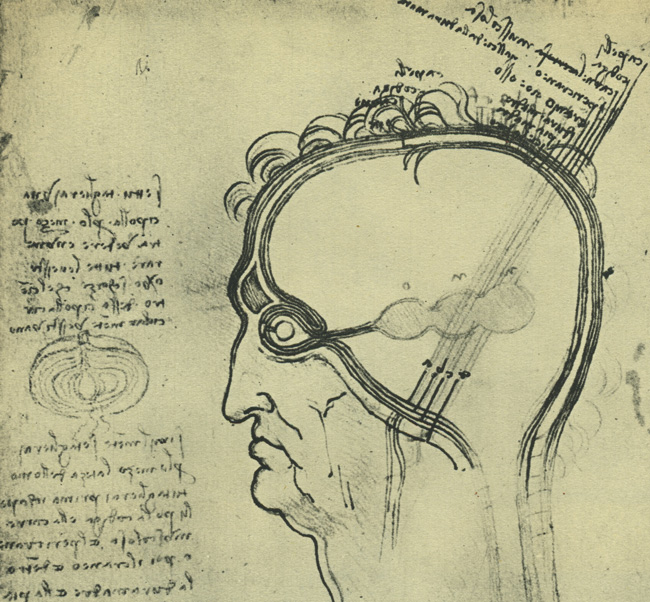
—quiffs of hair ... cavities—
– Leonardo da Vinci
That the eye connected to the brain had been known since the first recorded dissections, those of Alcmaeon of Croton in the sixth century BC. But the function which Leonardo ascribes to the cavities, or ventricles, was robust Galenism. Galen had identified these cavities with Imagination, Reason and Memory, the three faculties of mind; the brain, like the heart, was a pump, distributing various vital ichors to the body from, or via, these cavities (or ventricles). So Leonardo labelled them imprensiva, sensus communalis, and memoria.
On the same sheet, he has also, less speculatively, drawn the section of an onion.
Leonardo’s observed world was fluid, dynamical, turbulent; governed by tides and flows and inundation; the soul, or at any rate the mind, was regulated by sluices and dams and reservoirs and locks. His attempts to divert the course of the Arno away from Pisa were not engineering projects but mystical dabbling, and he would have clicked his tongue in approval had he been privy to our knowledge of the secretion of glands, the chemical distribution of emotion.
![]()
Renaissance thinkers and their heirs also actively embraced and developed new systems of error. Copernicus displaced the earth from the centre of the universe, but left the finitude of the solar system intact. Sir Isaac Newton was a witch, Keplar fiddled about with Platonic solids, and mineralogy was considered a branch of zoology. What was understood resided in the midst of what was invented, what was falsified, what was imagined, what was derived from authority.
In the same embattled way, Norbiton: Ideal City stands at the confluence of fields, real or imagined—socio-hermeneutic, psycho-chemical, quantum-gravitational, take your pick—that course around it, shape it, define it. Anatomise it? We don’t stand a chance.
![]()
"We see how the earth from particular seed engenders a multitude of trees and animals, feeds them and makes them grow; we even see the earth grow stones like teeth, and plants like hair as long as they stick to their roots, but stop growing if we pull them out. How can it be said that the womb of this female is not living? This womb that spontaneously gives birth and cares for so many offspring, that sustains itself and carries teeth and hair on its back?"
Marsilio Ficino, Quoted in Michel Jenneret, Perpetual Motion, pg. 43/4
![]()
This, at any rate, was the verdict of Alfred Cannoner, failed artist and protégé of Clarke.
It was Cannoner—grizzled, scabrous and unpersonable, reeking of whisky and melancholic detachment from the horror of his own circumstances—who reminded me of the Ficino quotation on mineralogy. He works from a pair of lock-ups at the dank and mossy roots of the Cambridge Estate high-rises and if occasionally his thoughts turn, like some dwarf miner, to the bones of the earth, it is no surprise.
Lock-ups in the popular imagination are seats of crime. After the heist, you meet in a lock-up. The sadistic torture dungeon is a lock-up—chains dangling from the blood-spattered walls. Lock-ups are like the rooms in Bluebeard’s castle, each one concealing an anonymous someone's dark life of the soul.
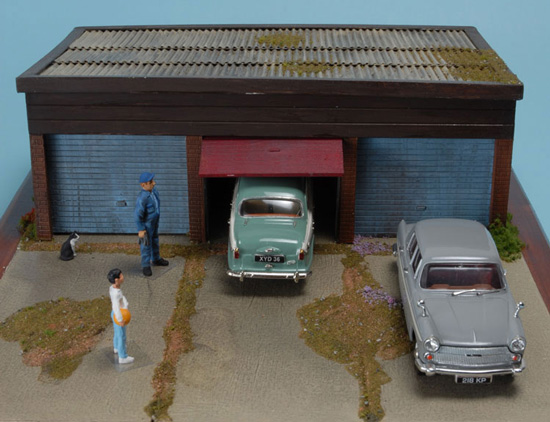
—dark life of the soul—
And anatomy, after all, is a process of dismemberment, a dissectional or vivisectional practice leading via tunnels of groping gore to some shrivelled male fantasy of intellectual clarity and mastery of the body.
A locus aptissimus for Cannoner, then. When Clarke took me to see him the first time, Cannoner was tinkering with his own mystical and alchemical transmutation, as he called it. He is dismantling the work of nearly two decades and assembling its parts into a new form. The work which he is dismantling is a relief-mosaic, broken up on to baseboards, each a square metre; the tesserae are sherds of printed-circuit board, shimmering coils of copper wire, spent batteries, fragments of Bakelite insulator, glinting transistors and diodes, shell-like capacitors, harmoniously-coloured resistors.
The mosaic, he tells me, is, or rather was, his City of God, a cosmic diagram. The idea was to make it in a hundred pieces, but the plan was clearly muddled in his head—for instance one of the baseboards, he assures us, was an accurate groundplan and modelling of Norbiton (empirically real, I suppose, not Ideal)—and he had never given much or any thought where he would be able to assemble the whole work.
And indeed he claims his intention was always to break it up. The boards on which the mosaic was fixed are by now scattered and hacked and torn into, the tesserae ransacked and discarded, but in the gloom of the lock-up I can still see, I think, the outline of houses, tower blocks, roads, civic and cultural centres in classical white, factory chimneys, industrial estates, football stadiums, hospitals, parks.
He laughs uneasily at the destruction. I’m my own Vandals, he says, bursting the gates of Hippo; my own Troy and Trojan horse. Didn’t see myself coming.
The spoglia are now being reassembled into a human figure, four-times life size (and therefore, like the mosaic, too large to assemble in the lock up); the figure is anatomically correct (I am assured), demonstrating interlocking systems of the body in great detail, albeit that all of the soft tissue has been transformed into hard wires and capacitors; this, he says, is the condition of urban man: man is now a function of the tarmac and the brittleness of the city.
The man however, like Cannoner's city, is a long way from completion and assembly. As yet there are merely lumps of electronic flesh, a thigh here, the half of a skull here, strips of flesh or muscle tacked on, rising out of the sea of parts strewn over the surfaces or sorted roughly into cardboard boxes or heaped up on the concrete floor.
Just as a city, he muses, is a monstrous singularity, an agglomeration and averaging of myriad individuals such that no individual can read herself in the city, but is nevertheless in thrawl to it; so too is every individual in the city an assemblage of the whole place, but a person distinct from it, nonetheless. Anthill or slumbering giant, take your pick.
![]()
'My goal', says Cannoner, just before we leave 'is to use everything. Everything I already have. Accumulate nothing new. I have everything I need. Use up everything in my great work, my Vitruvian man, keep expanding until it’s all used up, all has its place. I dream that my bench and my tools, every scrap of dust in those garages will find their way in. Me too, in the end. A totality. A completeness. And then I can stop.'
The universe, in other words, is a giant puzzle cast down for you to complete; the pieces of which, incidentally, are located in your garage.
And at this quintessence of madness, finally, I warm to the man.
![]()
Anatomy is both process and telos. It is something you do as much as something that is there; a field trip to the interior and the interior itself. The interior is extensive but the expedition need only slash a path as wide as your shoulders.
Disegno, too, has distinct if overlapping existences in time and space. It is something you do, or something you can hold, look at. With its varying purposes and techniques, it is a series of tilts at different objects, hence its frequent asymmetry, its concentration on this or that bit of the matter at hand.
At the time of our visit to Cannoner we had not yet conceived of the Anatomy of Norbiton. That came later, and was in part inspired by Cannoner and his futile, drunken, Norn-like groping for the lost threads of an age-old project, threads which for us lay in plain sight.
We learnt, in short, from his mistake—the anatomy which he failed to build was a static anatomy, a diagram complete in its parts. We are not producing a static diagram, but are planning instead a series of expeditions, hunting for that mountain, that lake, the source of that river, the fate of that dead Livingstone.
A series of sorties, in other words, and tilts at various objects.
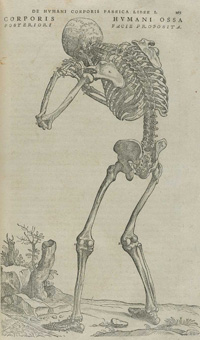
—various objects—
